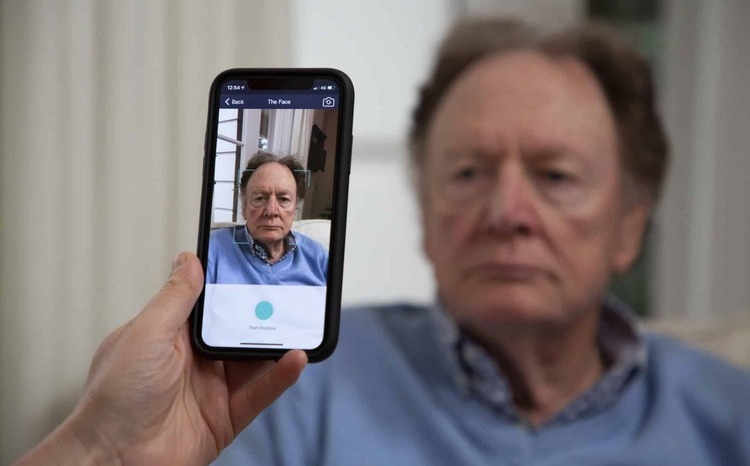Apps to bridge gaps
- 11 July 2013

Flat funding and rising demand mean the NHS is on a collision course with financial reality that could see a funding gap of £30 billion open up by 2020.
In response, NHS England has launched a consultation to try and gain public support for some fundamental changes to both make the health service more efficient and to tackle some of the health issues driving that demand.
It hopes to draw up a ten year strategy to get those changes in place. NHS England’s director of patients and information, Tim Kelsey, told a group of health IT business people at a recent entrepreneurs’ event that they must be part of the solution.
He encouraged his audience to get involved in the commissioning board’s initiative, arguing that “data and technology can fill a large part of that gap.”
Kelsey wants to hold quarterly meetings with SMEs and innovators in different parts of the country as part of plans to turn the NHS into a driver of economic growth and improve patient outcomes.
He told the entrepreneurs that technology should no longer be seen as something that sits alongside the core health service, but part of mainstream health delivery.
However, he acknowledged from personal experience as head of Dr Foster – an independent producer of hospital guides and healthcare data – that the NHS has never really respected partnerships with commercial or social entrepreneurs.
He insisted that this is one of many areas in which NHS England is trying to make a difference, and said the recently announced £260m Technology Fund should directly impact on the businesses of people sitting in the Westminster Hub, where the event was held.
He also reconfirmed the government’s commitment, reported in EHI last month, to work on a set of common standards for technology services with the US, which are due to be announced at a meeting of G8 health ministers in Northern Ireland in November.
Opening up the market
Beverley Bryant, Kelsey’s colleague as director of strategic systems and technology at NHS England, elaborated on how the commissioning board is trying to make it easier to do business with the NHS.
Key to this is making open application programming interfaces part of new GP Systems of Choice contracts. This will open up the GP market to SMEs, enabling them to create applications for things such as online appointment booking and ordering repeat prescriptions, which all practices must offer to patients by March 2015.
There will also be opportunities for SMEs to create front ends for the new Choose and Book system called NHS e-referrals, which will be partly open source.
Bryant explained that NHS England is trying to speed up procurements and improve supplier relations, but emphasised that “it’s not going to be easy.” “I’m really keen to change the culture so it becomes sustainable,” she added.
Bryant told the SMEs that she wants to get away from the combative relationship the NHS has with some suppliers, which means lawyers get rich while everybody fights over contract terms.
“If I can stimulate more confidence in the NHS to engage with suppliers to say what we want and have more of a dialogue before going into a contract situation I think things are going to be better,” she explained.
Bryant also talked about NHS England’s desire for a mixed economy of providers, including those with open source options.
She said the NHS needs commercial procurement skills to ensure it “knows what good looks like” and that NHS England has a role to play in linking up trusts that are thinking of buying systems so they can share information.
One way trusts can share information is on a new community of interest network set up by the commissioning board. The site is still in early stages, but the aim is to create a resource and a way for trusts to connect and discuss issues and products.
Patient-facing opportunities
NHS England director of customer relations John Coulthard is leading the development of an integrated customer service platform – dubbed the ‘daughter of NHS Choices’ and due to go-live this November.
The new service will be available across multiple platforms, as the first port of call for people wanting to engage with the NHS. Patients will be able to find information and transact with the health service by ordering prescriptions of booking appointments, as well as feedback on their experiences.
Coulthard admitted to SMEs that the NHS Choices API has been unreliable and “not a good user experience.” Again, though, he said this was going to change.
The customer platform development has two strands of work, one is changing the front end customer experience and another involves an engineering change to improve the experience of suppliers trying to link with it.
Ultimately, both NHS England and commercial providers will use the same APIs, “so we will live and die by our own APIs,” he said.
Coulthard gave the example of Transport for London, which has opened up its public transport information. This has led to numerous apps becoming available for people to find out about their local services.
He said the same would happen with the opening up of NHS Choices. One attendee envisaged an app that could tell patients the current waiting times at various local A&Es.
“We have to get the engineering right because if it’s not robust people won’t trust the technology and there will be no adoption,” said Coulthard.
About 1m people a day visit NHS Choices, which is as many contacts as the rest of the NHS put together However, these interactions are very “in and out” with little participation.
“We want to change that experience to a journey, giving people the right information at the right time to make the right choices about their care,” Coulthard said.




